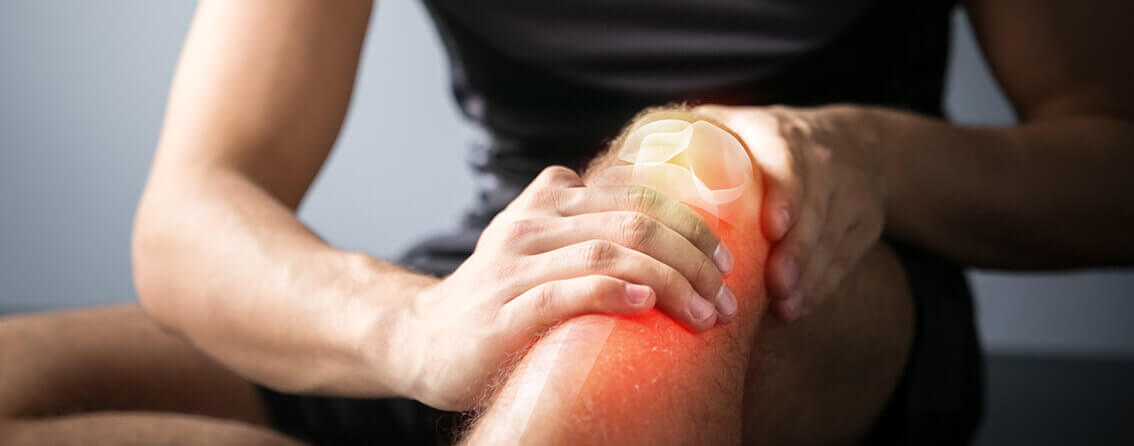Knee
The knee is a complex structure composed of bones, ligaments, muscles, and cartilage. This intricate joint works to facilitate vital movements, such as walking, running, jumping, and squatting, playing a fundamental role in helping us complete our day-to-day tasks and physical activities. When the knee does not function properly and we find we are suffering from knee pain, it can limit our stability, flexibility, and range of motion and overall decrease our quality of life.
At University Orthopedic Care, we understand the integral role of the knee in maintaining a healthy and active lifestyle. We are committed to offering a comprehensive range of services aimed at diagnosing, treating, and managing various knee-related conditions, including knee pain. Our team of highly skilled professionals utilizes the latest techniques and advancements in orthopedic care to deliver personalized treatment plans that prioritize patient comfort and recovery.
Common Knee Conditions
Knee injuries are often associated with sports medicine, but they are not limited to athletes. Unfortunately, knee injuries can affect anyone at any age, causing a great deal of discomfort and inconvenience in their lives. Common knee conditions our physicians treat in men and women include:
- ACL injury
- PCL injury
- Patellar dislocation
- Meniscus tear
- Sprains and strains
Other common knee injuries our physicians can treat and provide comprehensive education on include:
The Medial Collateral Ligament (MCL), located on the inner part of the knee, can get strained or torn when too much pressure is applied sideways. This results in an MCL injury or tear. If you are experiencing an MCL injury, you may notice pain or tenderness along the inner part of the knee, instability when you try to put weight on the affected leg or swelling around the knee area. Treatment options for MCL injuries range from rest and physical therapy for minor injuries to surgery for severe cases. Remember, early diagnosis and treatment can significantly improve recovery outcomes.
Patellar dislocation, commonly known as a dislocated kneecap, is a condition where the kneecap slides out of its normal position, often causing severe pain and difficulty in moving the knee. Individuals with a dislocated kneecap may experience symptoms such as a visible deformity in the knee area, inability to straighten the knee, and a feeling of instability. Additionally, there might be swelling around the knee, and the area may be tender to touch. The treatment for a dislocated kneecap often begins with the doctor manually repositioning the kneecap, a process known as a reduction. Depending on the severity of the dislocation, other treatments could include wearing a knee brace for support, physical therapy to strengthen the knee muscles, and, in some severe cases, surgery may be necessary.
Common Knee Treatments
When it comes to treatment for your knee condition, our physicians will do everything in their power to opt for non-surgical treatment options before resorting to surgical treatment. For those who need surgery, knee arthroscopy is often recommended as it requires minimally invasive techniques and allows patients to have a shorter recovery period.
Other common orthopedic knee treatments include:
Meniscus repair is a surgical procedure aimed at repairing torn knee cartilage. The menisci are C-shaped discs that cushion the knee, and a tear can cause pain, swelling, and issues with knee functionality. The repair involves a minimally invasive technique known as arthroscopy, where small incisions are made around the knee. A tiny camera and surgical tools are inserted to sew the torn meniscus. Post-surgery, patients must typically undergo physical therapy to restore strength and mobility in the knee. The goal is to preserve as much of the original meniscus as possible, considering its vital role in knee health.
Multi-ligament knee repair is a complex surgical procedure that aims to correct damage to multiple knee ligaments at the same time. Patients undergoing this surgery can expect a substantial improvement in knee stability and function. However, it is crucial to understand that recovery requires time and commitment to physical therapy. Post-surgery, immobilizing the knee for a short period is typically necessary to allow the ligaments to heal, followed by a carefully supervised rehabilitation program. This includes exercises to restore strength, mobility, and balance.
It is important to note there is a wide range of other knee treatments our physicians are happy to offer as a result of your injury and diagnosis. To find out which orthopedic treatments are right for you and your condition, we encourage you to come in for a private consultation with our providers.
Knee Pain Treatment Near Me in Florida
The expert doctors at University Orthopedic Care look forward to meeting you so you can start living your life without limits once again. If you have any questions about the orthopedic knee treatments that we can offer to you and your loved ones, please contact us today. To get started on your journey to greater mobility and reduced pain, we encourage you to request an appointment online.









